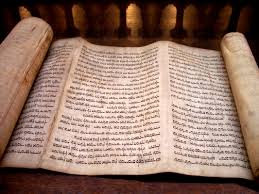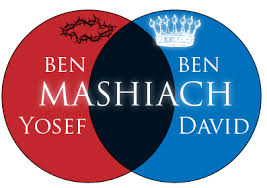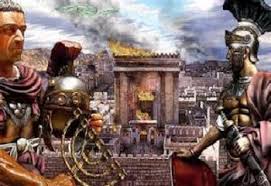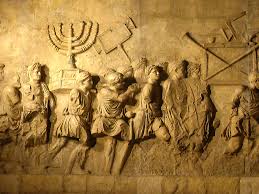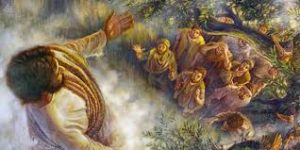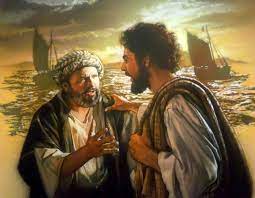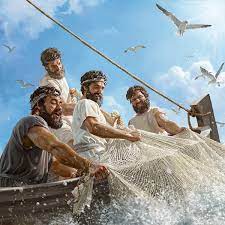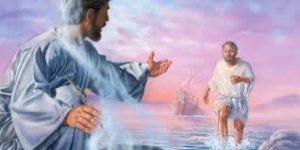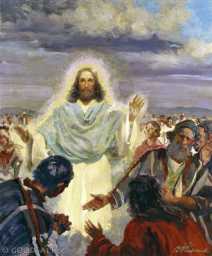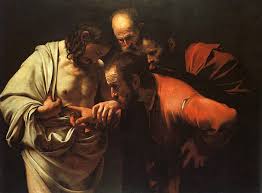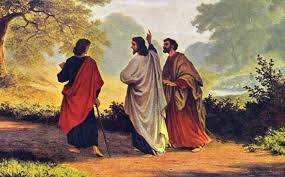Fk – Jesus Sends Out the Twelve Apostles Mt 9:35 to 11:1; Mk 6:6b-13; Lk 9:1-6
Jesus Sends Out the Twelve Apostles
Matthew 9:35 to 11:1; Mark 6:6b-13; Luke 9:1-6
DIG: What were the apostles told to do? What was their message? Why do you think their mission excluded Samaritans and Gentiles? What was the basic point of Jesus’ preparation speech to the Twelve? What problems would they (and we) face? How were they to respond to each problem? What does it mean to be like sheep among the wolves, as shrewd as snakes, as innocent as doves? Who would persecute them? Why? How might His truth divide a family? What kind of commitment does Yeshua call for? How were the talmidim to understand their reception? What confirming authority does the Lord bestow upon His emissaries at the end and beginning of His discourse?
REFLECT: How have you responded to Christ’s call? Are you willing to identify with Him despite the opposition and scorn of the world? Why? Why not? Which of Jesus’ teaching to His apostles could you apply to your own life today? Under what circumstances do you find it most difficult to talk about your faith? What does the paradox in Mt 10:39 mean to you? How can you lose yourself in Christ this week?
From Nazareth, Jesus descended to the populous plain of Esdraelon and began His third and last missionary campaign in Galilee with the Twelve, who had up to that time been studying in the Apostolic College of the Lord. Christ went through all the towns and villages in the area surrounding Nazareth, teaching in their synagogues, preaching the Good News of the Kingdom, which was the reality that the Kingdom of God was at hand because King Messiah was physically in their midst. And He healed every disease and sickness on the basis of individual faith (Matthew 9:35; Mark 6:6b). This is a summary of the various signs and miracles He performed at this point of His ministry.
When the Meshiach saw the crowds, He had compassion on them, because they were harassed and helpless, like sheep without a shepherd (Mattityahu 9:36). Although the Sanhedrin had rejected Him by this time (to see link click Eh – Jesus is Officially Rejected by the Sanhedrin), most of the people had not. So, the debate going on among the people was, “Should we follow the New Shepherd, or the old ones?” Being in a state of confusion they had become helpless, like sheep without a shepherd. Within the masses there were those disciples who believed in Christ, and He continued to minister to them.
But at that time Yeshua purposely limited the focus of His ministry to the twelve talmidim, or learners who had responded to His call. The Lord knew that He would eventually leave and go back to His home in heaven (see Mr – The Ascension of Jesus), so He purposed to train the twelve Jewish men who would carry on after He ascended back to the Father. In the ancient world, it was not a disciple who signed up for a particular rabbi, but the other way around. When a rabbi would see a promising student as a possible talmid, or learner, only then would the rabbi himself issue the call. Those who accepted the call would enter into a time of concerted apprenticeship with their rabbi.
This was not modeled after the Greek structure of learning, which was primarily concerned with transmitting information. The Jewish model of learning was not merely transferring information but more of a transformation of life. That is why the talmid would live closely with his rabbi – so that the spiritual lessons would be observed and experienced in daily living, not just written on a school blackboard. The rabbis taught, “Let your house be a meeting place for the rabbis and cover yourself in the dust of their feet and drink in their words thirstily” (Tractate Pirke Avot 1:4). The ideal disciples followed their rabbi so closely that his dust would swirl up against them as they walked together. They believed they shouldn’t be too far ahead of him nor too far behind.766
Then Messiah said to His apostles: The harvest is plentiful but the workers are few (Matthew 9:37). He changes the metaphor here from shepherding to harvesting. The principle Jesus is teaching is that those who pray for workers shall also become workers; those who pray for the harvest, can also scatter seeds for the harvest. Rabbi Tafon said, “The day is short and there is much work, and the workmen are in the land, for the reward is great and the Master of the house is insistent” (Tractate Avot).
Ask the Lord of the Harvest, therefore, to send out workers into His harvest field (Mattityahu 9:38). This is the title of Christ that represents His role as Judge. The Lord of the Harvest is the Judge of the unsaved who will stand before Him in the last day and be condemned to hell (see my commentary on Revelation Fo – The Great White Throne Judgment). Consequently, we are to urge Him to send workers to lovingly warn them, so they may be part of those harvested to eternal glory.767

He called His twelve apostles to Him and sent them out two by two as His ambassadors to preach the kingdom of God. He gave them authority to drive out evil spirits and to heal every disease and sickness among the believing remnant of Isra’el (Matthew 10:1; Mark 6:7; Luke 9:1-2). The fact that Yeshua chose twelve men is not a coincidence, as it parallels the larger community of Isra’el and the twelve tribes. There are three things we need to notice in this special commission. First, He sent them out two by two (Mark 6:7). Secondly, Jesus sent them out to preach the kingdom of God and not the gospel (Luke 9:2). The Good News could not be declared until after the resurrection of the Lord because the Dispensation of Grace was a mystery to them (Ephesians 3:3-9 and Colossians 2:2). Thirdly, He gave them delegated authority (Matthew 10:1). It would be important that the power of God be manifested to confirm the validity of the message of the talmidim.
These are the names of the twelve emissaries (Matthew 10:2a CJB). The talmidim are also called emissaries (Hebrew: sh’lichim), meaning ones sent out with a focus or purpose. Although many people are more familiar with the Greek translation of this term (apostoloi). In the Jewish world, it is said that the emissary (shaliach), or apostle is in fact equal to the sender himself (Tractate Berchot 34). In other words, a shaliach/apostle was not just sent out but was actually considered a direct representative of the one who sent him. Such a person has the authority of the sender. Thus, the term shaliach/apostle is very strong and in this context illustrates that Yeshua was designating those twelve Jewish men to be His direct representatives. The word apostle is a very strong term used to describe the twelve closest followers of Jesus. Therefore, I make a distinction between apostles and disciples in this commentary. The Twelve will be called apostles, and the others who would come to believe in Him will be called disciples. While it is true that the apostles were also disciples, it is not true that all disciples were apostles.
First, Simon (who is called Peter),and his brother Andrew; James son of Zebedee, and his brother John; Philip and Bartholomew; Thomas and Matthew the tax collector; James, son of Alphaeus, and Thaddaeus; Simon the Zealot and Judas Iscariot, who betrayed Him (Mattityahu 10:2b-4; also see Cy – These are the Names of the Twelve Apostles). We will learn much about the personalities and values of each of these chosen apostles as we proceed through the Life of Christ.
These twelve Jesus sent out with some practical instructions. It may surprise some readers that He first told them to avoid the territory of the Goyim. Jesus said: Do not go among the Gentiles or enter any town of the Samaritans (Matthew 10:5). From the gospels we know that the Samaritans were not only ranked with Gentiles and strangers (John 4:9), but that the very name was one of reproach (John 8:48).
Rather, they were to go to the lost sheep of Isra’el (Mattityahu 10:6). This was the context of their authority. Later, after the resurrection Jesus will issue the Great Commission making disciples of all nations (Genesis 12:1-3; Matthew 28:18-20).
It is not that Yeshua was neglecting the call to share with all the Gentiles, but it made sense that the first priority would be to share the Good News of the Kingdom with those who have waited expectantly for it. The time would come when the message will go to all the nations, but when the Twelve were sent out their priority was to share the message with the covenant people of Israel that ADONAI had fulfilled His promise to send a Redeemer (see my commentary on Exodus Bz –Redemption). Likewise, after Jesus had ascended back to the Father, Rabbi Sha’ul of Tarsus would still uphold this principle even as the apostle was appointed to the Gentiles (Romans 1:16).768
As they went, they were to preach this message as they knew it: The Kingdom of heaven is near. They were to authenticate their message by means of miracles. They were to heal the sick, raise the dead, cleanse those who have leprosy and drive out demons. Freely they had received, freely they were to give (Matthew 10:7-8). Rabbi Judah said in the name of Rav: Scripture says, “Behold, I have taught you statutes and judgments (Deut 4:5). Just as I teach for free, so you should teach for free” (Tractate Bechorot 29a).
The apostles were not to be concerned with the basic necessities of life. They would be provided for them. They were to travel light and wear sandals and have a tunic, but were not to take along any gold or silver or copper in their belts; they were to take no bag for the journey, or bread, or an extra tunic, or extra sandals or an extra walking-staff; for the worker is worth his keep (Matthew 10:9-10; Mark 6:9; Luke 9:3). Mark recorded that the Twelve could take a staff with them (Mark 6:8). This seems to contradict Mattityahu and Luke. But the problem is solved by observing that Matthew said they were not to take any extra items, but Mark wrote that they could take any staffs they already had before departing on their mission.769
The apostles were to focus entirely upon the Good News of the Kingdom without the distraction of secondary concerns. A similar point is made in the Talmud when it states that a man may not enter into the Temple Mount with a staff or his sandals or his gold or silver or with the dust upon his feet as if for business or pleasure (Tractate Berochot 9:5).770 It was probably for similar reasons that Jesus transferred those very ordinances to the talmidim when engaged in the service of the real Temple (John 1:14). This first public ministry of the apostles was to be a time of faith-building in many practical ways, so they were to trust that God would provide their needs from the people who would be receptive of their ministry.771
The talmidim were to look for members of the believing remnant. Whatever town or village you enter, search for some trustworthy person there and stay at his house until you leave. As you enter the home, give it your greeting of shalom. If the home is deserving, let your shalom rest on it; if not let your shalom return to you (Matthew 10:11-13; Mark 6:10; Luke 9:4). God’s gospel is offered to all the world, and it has the power to save all the world, but it is powerless to save or help even a single person who will not have Yeshua ha-Meshiach as Lord and Savior (John 5:40). The emphasis was on the individual rather than the masses. They were not to preach to the masses because that time had passed with Christ’s rejection (see En – Four Drastic Changes in Christ’s Ministry).
The apostles were forewarned that their message may not be well received by everyone. The rabbis taught that Palestine was not only holy, but it was the only holy ground, to the utter exclusion of all other countries. But everything outside the Land was darkness and death. The very dust of a Gentile country was unclean and defiled by contact. It was regarded like a grave, or like the decay of death. If a spot of heathen dust had been brought into Palestine, it did not and could not mingle with that of the Land, but remained to the end what it had been – unclean, defiled, and defiling everything that it touched. This cast light on the symbolical instructions of our Lord to His talmidim: If anyone will not welcome you or listen to your words, shake the dust off your feet when you leave that home or town, as a testimony against them, and go where their ministry would be more fruitful (Mattityahu 10:14; Mark 6:11; Luke 9:5). In other words, they were not only to leave such a town or home, but such was to be considered and treated as a pagan.772 The emphasis here is on those who were not worthy.
But as bad as the rejection by the people of Sodom was in their day, the rejection of the message of the Good News of the Kingdom from the apostles will carry even worse fate. I tell you the truth, it will be more bearable for Sodom and Gomorrah who were destroyed for their wickedness, on the day of judgment than for that town (Matthew 10:15). This was a sign of a coming day of judgment upon them with the different degrees of punishment in the final judgment.
The apostles were not to be naïve. Jesus warned them: I am sending you out like sheep among wolves (Matthew 10:16a). Sheep are perhaps the most dependent, helpless, and stupid of all domesticated animals. The people in Palestine understood the nature of sheep and the danger of wolves. Here, Yeshua gave a graphic picture of the rejection and persecution by a God-hating world they would face because of Him. So, before they went out, He set before them the cost of following discipleship. Just as He did not escape opposition and persecution, neither would they (John 15:18-27).
Therefore, be as shrewd as serpents and as innocent as doves (Matthew 10:16b NASB). In Egyptian hieroglyphics, as well as in much ancient folklore, serpents symbolized wisdom. They were considered to be shrewd, smart, cunning and cautious. In that trait, at least, believers are to emulate serpents (Colossians 4:5). The basic idea is that of saying the right thing at the right time, having a sense of appropriateness, and of trying to discover the best means to achieve the right results to glorify the Lord.773
So, they needed to be continually diligent. Be on your guard against men; they will hand you over to the local councils and flog you in their [Lesser] Sanhedrins (see Lg – The Great Sanhedrin). There will be widespread persecution. Here Jesus moves to the near prophetic future because they will not witness to the Gentiles until after His death and resurrection. On My account you will be brought before governors and kings as witnesses to them and to the Gentiles. Those future persecutions will provide opportunities for exercising faith and demonstrating faith. But when they arrest you, do not worry about what to say or how to say it in each and every situation. At that time you will be given what to say, for it will not be [just] you speaking, but the Spirit of your Father speaking through you (Mattityahu 10:17-20). The later chapters of the gospel accounts, as well as the history in the book of Acts, verify some of these very situations.
The opposition is predicted to become so intense that even close family members will become alienated from one another. Brother will betray brother to death, and a father his child; children will rebel against their parents, and as a result, have to put their own children to death. Except for the believing remnant, all men will hate you because of Me. Yet, the promise of Yeshua is that whoever endures, or stands firm, to the end will be saved (Matthew 10:21-22). This cannot mean a guarantee of physical deliverance in all cases, but spiritual redemption is the ultimate promise for all believers in the Lord – no matter what happens in the current age. The condition of this promise is eternal security (see Ms – The Eternal Security of the Believer). It is not so much that such endurance will earn eternal security, but that standing firm in the faith will confirm the reality of a spiritual relationship already existing with the Messiah.
When you are persecuted in one place, flee to another. I tell you the truth, you will not finish going through the cities of Isra’el before the Son of Man comes (Matthew 10:23). The inspired human author Mattityahu wrote these words some decades after Jesus spoke them and certainly realized that they had not been fulfilled. The word used for will not finish (Greek: teleo) means to bring to an end or to complete. Therefore, the Good News will need to be continually presented to the nation of Isra’el until that day when all Isra’el will be saved (Romans 11:25-27), at the end of the Great Tribulation (see my commentary on Revelation Ev – The Basis for the Second Coming of Jesus Christ).
Jesus warns them to expect to be rejected on the same basis that He was rejected, on the grounds of demon possession. A student is not above the teacher, nor a servant above his master. Yeshua would live a life of positive blessing, yet with significant opposition. The simple reality is that His followers, yes, even today, cannot expect a different response. It is enough for students to be like their teachers, and servants like their masters. If the head of the house has been called Beelzebub (see Ek – It is only by Beelzebub, the Prince of Demons, that This Fellow Drives out Demons), how much more the members of his household (Matthew 10:24-25). This is typical Jewish logic, from light to heavy. The point here is that the apostles of Jesus could not naively believe that they would be well received by the same people who so strongly rejected their rabbi.
Nevertheless, the apostles were not to be afraid of them, but to realize that the Truth would prevail. They were still to proclaim the message of the kingdom of Heaven despite the persecution. Both Satan (2 Cor 11:14) and the world (1 Jn 2:15-17) are highly successful at illusion and deception. They can make an impressive and convincing case for sin by covering it over with seemingly good motives and helpful benefits. But the Lord has decreed that there is nothing concealed that will not be disclosed or hidden that will not be made known (Mt 10:26). Satan and the world’s wickedness will be shown for what it is, and believer’s righteousness will be shown for what it is. God has promised to vindicate His children.774
What was hidden for a time must ultimately be revealed. What I tell you in the dark, speak in the daylight; what is whispered in your ear, proclaim from the rooftops (Matthew 10:27). The light of the Good News is not meant to be kept under a bowl (see Df – You are the Salt of the Earth and the Light of the World), however offensive it may be to some people. Even though for the time being Jesus’ teaching to His talmidim has to be in the darkness, or, as it were, into their ears . . . in the coming time of witness before governors and kings (Matthew 10:17), and of worldwide proclamation of the gospel (Mattityahu 24:17) it must no longer be hidden. The flat rooftops of Palestinian houses were places of social interaction in the evening where the Gospel could be shared.775
Do not be afraid of those who kill the body but cannot kill the soul. Rather, be afraid of the One who can destroy both soul and body in hell (Matthew 10:28). What does this have to do with the apostles or us? If you are saved, it should cause you to rejoice. You’ve been rescued. A glance into hell leads the believer to rejoice. But it also leads us to intensify our efforts to reach the lost. To understand the reality of hell is to pray more earnestly and to serve more diligently.
Are not two sparrows sold for a penny? Yet not one of them will fall to the ground apart from the will of your Father. God’s knowledge of us is so detailed and His interest so keen that even the very hairs of your head are all numbered. So don’t be afraid; you are worth more than many sparrows (Mattityahu 10:29-31). The obvious understatement pictures how very dear ADONAI’s children are to Him. In a similar promise Yeshua said: If that is how God clothes the grass of the field, which is here today and tomorrow is thrown into the fire, will He not much more clothe you – you of little faith (Matthew 6:30). How then can we be anxious and fearful, knowing of such care and protection by our heavenly Father?
The overriding principle is this: Whoever acknowledges Me before others, I will also acknowledge before My Father in heaven. But whoever disowns Me before others, I will disown before My Father in heaven (Mattityahu 10:32-33). Once again, the focus is on the individual rather than the masses. Are we willing to stand with ADONAI and Yeshua even when it is unpopular with those around us? The implications are huge, for if Jesus is the true Meshiach sent by the God of Isra’el, and then to reject Him is, in essence to reject God.
As a result of the rejection of Jesus as the Messiah, there will be division in the Jewish home. Do not suppose that I have come to bring peace to the Land. I did not come to bring peace, but a sword (Matthew 10:34). Instead of peace, they will get the Roman sword. Jerusalem and the Temple were destined for destruction as soon as Jesus was rejected as the Messiah (see Isaiah 8). There would have been peace for Isra’el if they had accepted Him. But instead of unity, there would be division. For I have come to turn a son against his father, a daughter against her mother, and a daughter-in-law against her mother-in-law. A man’s enemies will be the members of his own household (Matthew 10:34-37). The talmud also applies Micah 7:6 to messianic times. For a son insults his father, a daughter rises against her mother, daughter-in-law against her mother-in-law – a person’s enemies are the members of their own household (Micah 7:6). This passage is relevant also to Luke 1:17, and Malachi 4:6, turn the hearts of the fathers to the children, is quoted.
Jesus will be the symbol of either acceptance or rejection. Discipleship means that we may have to choose between Him and our family. Anyone who loves his father or mother more than Me is not worthy of Me; anyone who loves their son or daughter more than Me is not worthy of Me; and the individual believer must make a full commitment to discipleship. Jesus said: Whoever does not take up their cross and follow Me is not worthy of Me. We must fully identify ourselves with His rejection. Whoever finds their life will lose it, and whoever loses their life for My sake will find it (Mt 10:37-39). We need to lose our life in Messiah.
There will be rewards for those who believe (see my commentary on Revelation Cc – For We Must All Appear Before the Judgment Seat of Christ). Like the centurion (see Ea – The Faith of the Centurion) those who receive the apostles are viewed as having received Jesus. He closes this teaching with the common principle that anyone who welcomes you welcomes Me, and anyone who welcomes me welcomes the one who sent me. Whoever welcomes a prophet as a prophet will receive a prophet’s reward, and whoever welcomes a righteous person as a righteous person will receive a righteous person’s reward. Even the most menial task will be rewarded. And if anyone gives even a cup of cold water to one of these little ones who is my disciple, truly I tell you, that person will certainly not lose their reward (Matthew 10:40-42).
Then the fulfillment was finally realized and they went out and applied what they had learned. After Jesus had finished instructing the twelve apostles, He went on from there to teach and preach the Good News in the towns of Galilee. The word Luke used for preach is euaggelizomai, or to announce the Good News. And the apostles also went out and preached that people should repent, or to turn around and go in a different direction, or a change of mind regarding one’s previous sinful life and the determination to be done with it. This preaching would not be Good News to the sinner, unless it was accompanied with the announcement of salvation provided by ADONAI. So those who changed their minds about Jesus received salvation and became part of the believing remnant of Jews in that day. They drove out many demons as confirmation of their authority, anointed the sick people with oil and healed people everywhere (Matthew 11:1; Mark 6:12-13; Luke 9:6).
While it may be costly, there is no better way to invest our lives than as committed disciples of King Messiah! May we heed the message of our great Rabbi to find the blessing of God, both now and in the world to come.776
The disciple of Christ is called to proclaim the new life in Him– to testify, both in word and deed, that Yeshua has overcome sin and inaugurated the kingdom of God. As He explained this calling, Jesus also warned His apostles that the new life they were to reveal was radically different from life on their own terms. The division Messiah spoke of occurs as the light in us becomes brighter, the darkness around us is more fully exposed.
If we want the light of Yeshua ha-Meshiach to shine, the darkness must give way – and this can sometimes be painful. Nevertheless, it is the calling of a disciple to maintain his or her allegiance to the Lord, and to let Christ’s Word, like a two-edged sword, separate the darkness from the light. At the same time, Jesus never leaves His disciples without the consolation of His love. We are comforted by knowing that as we share in His cross, we also share in His resurrection – both now and at the end of the age. Dietrich Bonhoeffer, a German Lutheran pastor who as imprisoned and put to death by the Nazi regime in Germany during WWII because he opposed its policies, put it this way:
The final decision must be made while we are still on earth. The peace of Jesus is the cross. But the cross is the sword God wields on earth. It creates division. A son against his father, a daughter against her mother. A man’s enemies will be the members of his own household – all this will happen in the name of God’s Kingdom and His peace. That is the work that Christ performs on the earth.
God’s love is altogether different from the love of men for their own flesh and blood. His love for mankind means the cross. But that cross and that way are both life and resurrection. Whoever finds their life will lose it, and whoever loses their life for my sake will find it.
Lord, You haven’t called me to a life of ease and comfort. You have called me to a life of trust and obedience. Help me to grow in You. And help me resist the common but foolish notion that following You will be anything but hard.777






